Monographs
We welcome enquiries from those who wish to produce their own publication as a monograph under the Society of Antiquaries’ imprint.
We are also in the process of making our monographs available online as Open Access publications.
Notes for Book Authors
-
To help you prepare your manuscript for submission and eventual publication as a monograph under the Society of Antiquaries’ imprint, please read the following instructions:
Proposals must be submitted using this form (download, complete and email to the Publications Manager, Catrina Appleby at [email protected].
Please note that no manuscripts can be considered before the editor has received a completed Publications Proposal Form (see above).
List of Publications
This list is in reverse chronological order with the most recent publications listed first. Orders should be placed directly with the distributor.
-
Landscape and Settlement in the Vale of York: Archaeological investigations at Heslington East, York, 2003–13
Steve Roskams and Cath Neal
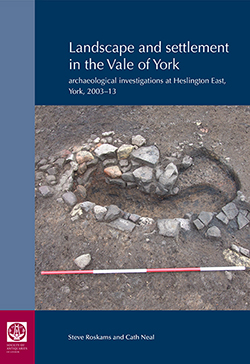
ISBN 978-0-8543-1302-0
Distributor: Oxbow Books
Published: July 2020 | Price: £35
Order your copy now from Oxbow Books
The Vale of York, in North Yorkshire, has been used and shaped by communities since the end of the last Ice Age to the modern day. Its earliest, prehistoric features chart the way in which household groups shifted from mobile to more sedentary forms of occupation over time, culminating in the creation of landscape divisions from the end of the Bronze Age, and then recognisable field systems during the Iron Age. Throughout all periods, a variety of activity types on the landscape has been evident in the landscape, taking significantly different forms in different contexts: water management; the creation of boundaries; agricultural production; structural development, from domestic houses to larger monuments; exchange and consumption; and mortuary practices plus other ritual activity. This volume takes a thematic approach to these activities, revealing much about the area’s development. Providing a thematic analysis of the excavated evidence from the Heslington East area, this volume combines the results of commercial, student training and local community fieldwork between 2007 and 2013. A concluding chapter discusses temporal change by looking at key points of transition in landscape activity in the area and interpreting one of the largest exposures of prehistoric and Roman activity in the immediate hinterland of Eboracum, a major Roman town in Britain.
Isurium Brigantum: An Archaeological Survey of Roman Aldborough
Rose Ferraby and Martin Millett, FSA
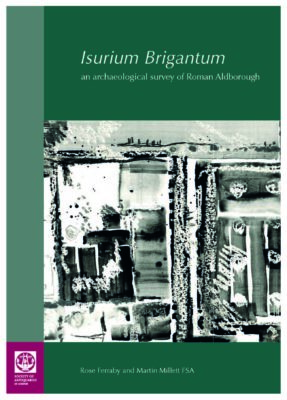
ISBN 978-0-8543-1301-3
Distributor: Oxbow Books
Published: April 2020 | Price: £35
Order your copy now from Oxbow Books
Modern-day Aldborough, in North Yorkshire, lies on the site of Isurium Brigantum, the former administrative capital of the Brigantes, one of the largest indigenous tribes of Roman Britain. Strategically located on Dere Street, by the second century ad Isurium Brigantum had become a key Roman town engaged with the supply of the northern frontier, with buildings and mosaics that reveal a thriving economy through to the fourth century.
In the eighteenth and nineteenth centuries the site was the subject of important antiquarian investigations. However, unlike southern counterparts such as Calleva Atrebatum or Verulamium, in the twentieth century it attracted less archaeological attention. In 2009 a team of archaeologists led by Dr Rose Ferraby and Professor Martin Millett began a major re-examination of the site. This included large-scale geophysical surveys using both gradiometry and high-resolution ground-penetrating radar. Most of the town and its surroundings were revealed, allowing its development from the second century ad to the medieval period to be mapped with great accuracy.
The Staffordshire Hoard: An Anglo-Saxon Treasure
Chris Fern, Tania Dickinson and Leslie Webster
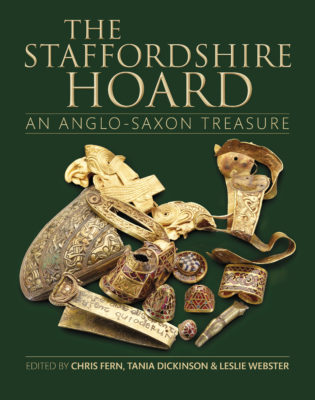
ISBN 9781527233508
Distributor: Oxbow Books
Published: 2019 | Price: £49.95
Order your copy now from Oxbow Books
In July 2009 the discovery of the Staffordshire Hoard by a metal-detectorist immediately captured the world’s attention. Comprising almost 6kg of precious-metal objects, and found in a deliberately dismantled state, the Hoard remains the largest Anglo-Saxon treasure ever discovered. Work on conserving and researching the Hoard has revealed a wealth of information on the high culture of the ruling class of seventh-century England at a critical period of warfare and religious conversion.
The Staffordshire Hoard: An Anglo-Saxon Treasure tells the story of the Hoard’s discovery, its acquisition for the nation, and the six-year research project that pieced its fragments back together, identified its objects and explored their manufacture. Written by a team of specialists in Anglo-Saxon archaeology and history, and expert conservators with unparalleled access to the Hoard, the text is beautifully illustrated throughout with full-colour photographs, maps and explanatory drawings. Key chapters discuss the decoration and meaning of the Hoard’s intricate ornament, the techniques of Anglo-Saxon craftsmen, the religious and historical background, and hoarding practice in Britain and Europe, to place this most exceptional find in context. Finally, the text explores the impact that the find has had locally, nationally and internationally in the twenty-first century.
Edited by Chris Fern, Tania Dickinson and Leslie Webster
With contributions from: Janet Ambers†, Eamonn Baldwin, Eleanor Blakelock, Jenni Butterworth, Hilary Cool, Alison Deegan, Svante Fischer, Kayleigh Fuller, Richard Gameson, Pieta Greaves, Peter Guest, Matthias Hardt, Catherine Higgitt, John Hines, Alex Jones, Marcos Martinón-Torres, Peter Mc Elhinney, Andrew Meek, Lizzie Miller, George Speake, Alan Thacker, Niamh Whitfield, Barbara Yorke
Glastonbury Abbey: Archaeological investigations 1904–79
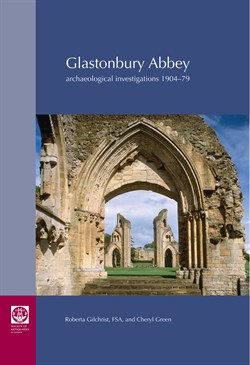
Roberta Gilchrist and Cheryl Green
ISBN: 978-0-85431-300-6Distributor: Oxbow Books
Published: 2015 | Out of stock
Available Open Access!
Glastonbury Abbey was renowned in the Middle Ages as the reputed burial place of the legendary King Arthur and the site of the earliest Christian church in Britain, believed to have been founded by Joseph of Arimathea in the first century ad. New insights into the abbey’s origins and historical development have been revealed by thirty-six seasons of archaeological excavation that took place at the site during the twentieth century, directed by such iconic figures as Sir William St John Hope, Sir Charles Peers, Sir Alfred Clapham and Dr Courtenay Arthur Ralegh Radford.
The results of these antiquarian excavations, only published in the past in the form of brief interim statements, can now be examined critically for the first time, thanks to a joint project by the University of Reading and Glastonbury Abbey, funded principally by the Arts and Humanities Research Council. This volume reports on the comprehensive study of the archaeological archives and artefact collections and a new geophysical survey. Previous interpretations are challenged and new evidence is presented for the Saxon and later medieval phases of the abbey, including an important complex of early glass-working furnaces, dated c 700.
For the first time, archaeological evidence is revealed for the Norman and later medieval monastic ranges and the luxurious abbot’s hall and court. The rich assemblage of material culture includes devotional objects, fine imported vessels, locally produced ceramic floor tiles and stained glass and sculpture of the highest quality. Many retrospective elements are evident in the architecture of Glastonbury Abbey, perhaps suggesting a deliberate strategy to cultivate memory and to promote the antiquity of its Christian heritage.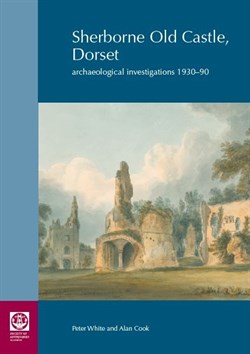 Sherborne Old Castle, Dorset
Sherborne Old Castle, DorsetPeter White and Alan Cook
ISBN: 978-0-85431-299-3 | Distributor: Oxbow Books
Published: 2015 | Price: £35. Special Price: £14.95Available Open Access!
Roger, Bishop of Salisbury (1102–39), built Sherborne Old Castle within his episcopal estate at Sherborne, in north-west Dorset, in about 1122–35. The fortified palace was one of several major building projects undertaken by Bishop Roger; among the others were the rebuilding of Old Sarum Cathedral and castles at Devizes and Malmesbury. Although Sherborne Old Castle was altered over the next four centuries, most of its original structural elements were retained until the buildings were slighted in 1645.
This report describes and analyses the information obtained from all the archaeological investigations undertaken at the castle since the early twentieth century, including those of A E Rawlence (1932), C E Bean (1932 to 1954), and the authors of this report, Peter White, then Inspector of Ancient Monuments, between 1968 and 1980, and the late Alan Cook (1980–95). An analysis of the results, together with continuing historical research, have revealed much more about the major periods of the castle’s construction and use.
It is now possible to describe and source more exactly the sophisticated design of Roger’s castle and the high quality of the craftsmanship employed in its construction and decoration; the later phases of development during the medieval period including the improvements to the castle’s defences and accommodation when held by the Crown between 1183 and 1354; the post-1357 alterations after the castle had been regained by Bishop Wyvil of Salisbury, and the important fifteenth-century building programme carried out by Bishop Thomas Langton.
A much clearer assessment has been made of the impact of the works undertaken by Sir Walter Raleigh in his abortive attempt to remodel the castle as his country seat after he obtained the estate in 1592. Finally, although much of the fabric of the castle was destroyed following its surrender to a Parliamentary army in 1645, new documentary evidence and structural analysis has revealed how, during the eighteenth century, the Digby family developed and maintained the ruins as a romantic feature on the northern boundary of their landscaped park.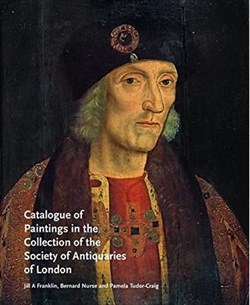 Catalogue of Paintings in the Collection of the Society of Antiquaries of London
Catalogue of Paintings in the Collection of the Society of Antiquaries of LondonJ A Franklin, B Nurse and P Tudor-Craig
ISBN: 978-1-909400-19-1 | Distributor: Brepols Publishers
Published: 2015 | Price: £170 / €200
The paintings owned by the Society of Antiquaries of London are important for the quality of some of the individual paintings and for the collection as a whole. Before England’s National Portrait Gallery was founded, the Society pioneered the study of royal portraiture, seeking to establish the true likenesses of the Tudor and Plantagenet monarchs and some of their continental counterparts. In the words of Sir Roy Strong, the Society’s early portraits are ‘of the utmost national importance … next to the Royal Collection, the most important series of early sixteenth-century royal portraits to survive as a group’.
They are joined in this scholarly catalogue raisonné by works that have been exhibited in Europe’s major museums: among them are Hans Eworth’s portrait of Mary I, Simone dei Crocifissi’s Dream of the Virgin, an outstanding example of fourteenth-century Bolognese Gothic art now on long-term loan to the National Gallery, and portraits of Daniel and Rebecca Minet by Thomas Gainsborough.
This fully illustrated catalogue, wedded to meticulous scholarship and the results of the latest scientific dating techniques, ensures that the art historical world now has access to art that will be studied and discussed for many years to come.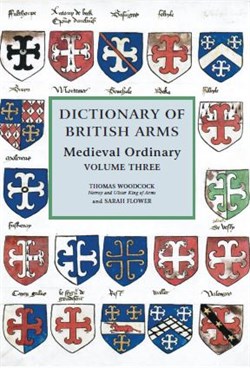 Dictionary of British Arms – four volume set
Dictionary of British Arms – four volume setEdited by Thomas Woodcock
Distributor: Boydell & Brewer Ltd
Published: 2014 | Price: £285
The set collects together all four volumes of the complete dictionary, an invaluable reference for studying or working with medieval British coats of arms. See individual volumes below.
The Dictionary is the result of a 1926 bequest to the Society of Antiquaries for the production of a new edition of Papworth’s Ordinary which has remained, since its publication in 1874, the principal tool for the identification of British coats of arms. An Ordinary, in this context, is a collection of arms arranged alphabetically according to their designs, as opposed to an armory which is arranged alphabetically by surname.
Now complete, the Dictionary covers the period before the beginning of the heraldic visitations in 1530. The publication of its fourth and final volume means that the wide range of people interested in medieval arms – historians, antiquaries, archaeologists, genealogists and those dealing in and collecting medieval objects – are able to identify accurately the arms that occur in a medieval context. Even those without a knowledge of the subject will be able, by means of the index, to discover the blazon of arms recorded under particular surnames in the Middle Ages.
The set is, therefore, an essential reference that will remain the standard work for generations to come.The Inventory of King Henry VIII. Volume II: Textiles and Dress
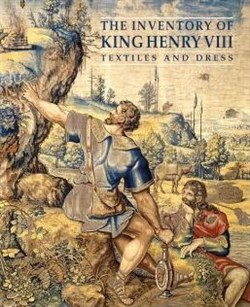 Edited by Maria Hayward and Philip Ward; Society of Antiquaries of London Research Report No. 75
Edited by Maria Hayward and Philip Ward; Society of Antiquaries of London Research Report No. 75
ISBN: 978-1-905375-42-4 | Distributor: Brepols Publishers
Published: 2012 | Price: £120 /€140
Winner of the British Art Book Prize 2014 awarded by the Historians of British Art, this inventory is not only a catalogue of magnificence but also a key text for evaluating the successes and failures of the Tudor monarchy under Henry viii, telling us what once existed, and enabling us to identify surviving objects.
The volume’s 24 essays are written by leading experts on Tudor art and artefacts and discuss the principal categories recorded in the Inventory in their historical and archaeological context. Among the subjects covered are the tapestry collection of Henry viii, accounts of the tents and revels, which provided the settings and costumes for court entertainments, and the Great Wardrobe, which served as a warehouse for the King’s large and valuable stores of textiles, and a study of the vestments and textiles associated with royal worship.
Altogether, the essays in this volume combine the histories of material culture, religion, politics and ceremony in a unique way that would not have been possible before the establishment of the Inventory Project twenty years ago. The essays are richly illustrated, with many of the plates in colour and where possible, images of surviving pieces have been included.
Two further volumes are in preparation – Arms, Armour and Ordnance (publication planned for 2017) and Decorative Arts and Everyday Objects (publication planned for 2019) – which will bring the series to its conclusion.Dictionary of British Arms: Medieval Ordinary Volume III
Thomas Woodcock and Sarah Flower
ISBN: 978-0-85431-293-1 | Distributor: Boydell & Brewer Ltd
Published: 2009 | Price: £95
This book is the third in a series of volumes designed to enable those with a working knowledge of heraldry to identify medieval British coats of arms. The project is the result of a bequest to the Society of Antiquaries in 1926 for the production of a new edition of Papworth’s Ordinary, which has remained, since its publication in 1874, the principal tool for the identification of British coats of arms. An Ordinary, in this context, is a collection of arms arranged alphabetically according to their designs, as opposed to an armory, which is arranged alphabetically by surname.
The present work is the third in a four-volume Ordinary covering the period before the beginning of the heraldic visitations in 1530. Its publication will mean that historians, antiquaries, archaeologists, genealogists, heraldists, antique dealers and collectors will be able to identify arms on tombs, monuments, seals, textiles, metalwork, glass and other medieval artefacts with a far greater degree of accuracy than has hitherto been possible. Even those without knowledge of the subject will be able, by means of the index, to discover the blazons of arms recorded under particular surnames in the Middle Ages.Roman Mosaics of Britain, Volume IV: Western Britain
Stephen R Cosh and David S Neal
ISBN: 978-0-85431-294-8 | Distributor: Oxbow Books
Regular Price: £160.00. Special Price: £50.00
Volume IV: Western Britain brings to a triumphant conclusion this monumental project to catalogue, describe and illustrate every Romano-British mosaic. The area covered by the fourth and final volume in the corpus is one of the richest regions of Britain in economic as well as architectural and artistic terms and this is reflected in the quantity and quality of the region’s mosaics, which include the largest figured mosaic ever found in Britain – the Woodchester Orpheus pavement – which was perhaps the inspiration for the other famous Orpheus mosaics of the Roman Cotswolds.
At the heart of this affluent region is Cirencester, Roman Britain’s second largest town, represented here by more than sixty mosaics, the second-century examples being the most exquisite in the country. There are also many fine mosaics from the region’s highly ornate villas, as well as from the towns of Gloucester, Caerwent and Wroxeter.
The catalogue follows the format of earlier volumes in providing an account of each mosaic’s discovery and locating the mosaic within its building plan. Following the description are notable parallels and major references. Many of the illustrations are by the authors, with additional ones by Luigi Thompson, as well as photographs and historical engravings, a high proportion of the latter by Samuel Lysons whose home was in Gloucestershire where he did much of his pioneering work in archaeological excavation and illustration. Brief biographies of Lysons and all the other artists whose work grace all four volumes appear at the end of this volume.
As with previous volume the work is preceded with a substantial introduction. This deals with the history and topography of the region, buildings and rooms, an assessment of regional workshops, and schemes, ending with a consideration of mosaics in relation to the end of Roman Britain.Westminster Abbey Chapter House: the History, Art and Architecture of ‘a Chapter House Beyond Compare’
Edited by Warwick Rodwell and Richard Mortimer
ISBN: 978-0-85431-295-5 | Distributor: Oxbow Books
Regular Price: £49.95. Special Price: £19.95
This volume tells the complete story of the Westminster Abbey chapter house, which ranks as one of the spectacular achievements of European Gothic art and architecture; and that is precisely what its builder, King Henry III, intended. Begun in the mid-1240s, and completed within a decade, its pre-eminence was recognized in its own day, when the chronicler Matthew Paris described Westminster as having ‘a chapter house beyond compare’.
Papers by leading scholars in the field of medieval art and architecture reveal the reasons for the construction of the chapter house and trace the possible influences upon the master mason in charge of the project. The subsequent history of the structure is revealed as it evolved from a meeting place of the king’s Great Court, the predecessor of the English Parliament, and as a royal treasury into a repository for government archives after the Dissolution, home to the Public Record Office until the late 1850s, and its subsequent restoration at the hands of Sir George Gilbert Scott.
Now under the care of English Heritage, the chapter house has just been cleaned and restored again, leading to the spectacular light-filled building that we see today, to which full justice is done by this richly illustrated book, filled with pictures of the architectural and sculptural details, the medieval tilework and the wall painting that justify the motto inscribed in the chapter house floor: ‘as the rose is the flower of flowers, so is this the house of houses’.Heraldic Badges in England and Wales
by Michael Powell Siddons
ISBN: 978-1-84383-493-9 | Distributor: Boydell & Brewer Ltd.
This is the first general study of heraldic badges to be published. Badges have usually been treated as an incidental part of heraldry, and although many illustrations and descriptions of badges survive from the late fifteenth century onwards, the only serious attempts to engage with the subject are to be found in individual scholarly studies and occasional lists of badges.
Michael Siddons’s monumental work fills a serious gap in the literature of heraldry, and offers a comprehensive overview of the subject from the first use of badges in the fourteenth century to their decline in the early seventeenth century. The first volume discusses the nature and use of heraldic badges, and the sources of information on badges, while the second is a dictionary of heraldic badges, divided into two separate parts covering royal and non-royal badges. This is followed by ordinaries of heraldic badges and livery colours in the third volume. There are extracts from unpublished records, a bibliography and full indexes. Badges occur in a wide variety of contexts – costume, furnishings, armour, warfare, tournaments, seals, flags, plate and monuments, to name but a few – and this will be an indispensable resource for anyone studying the visual inheritance of the English past.
Hill Hall: A Singular House Devised by a Tudor Intellectual
by Paul Drury and Richard Simpson
ISBN: 978-0-85431-291-7 | Distributor: Oxbow Books
Regular Price: £55.00. Special Price: £14.95
This is the complete history of a building that began as a hunting lodge, late in the eleventh century and that grew to be the principal house of the manor of Theydon Mount in Essex, a small country retreat within easy reach of London. In 1556, the house was acquired by Sir Thomas Smith (151277), a man of humble origins but precocious intellect who became Regius Professor of Civil Law at Cambridge at the age of thirty and Chancellor of the University two years later. He then forsook academic for political life, becoming Master of Requests to the Lord Protector Somerset. From 1557, Smith rebuilt the house in French-influenced classical style and decorated it with wall paintings of Cupid and Psyche and King Hezekiah, conveying complex messages of morality and affinity as part of a coherent programme of images in paint, glass and tiles.
Four centuries on, the house was first used as an open prison, then, in 1969, largely gutted by fire and finally, in 1980, taken into the care of the Department of the Environment. Archaeological excavation and detailed recording of the surviving fabric took place prior to the restoration of the house and its mural paintings, the results of which are now presented in this copiously illustrated account of one of the most important and influential houses to be built in Elizabethan England.
Roman Mosaics of Britain Volume III South-East Britain
by David S Neal and Stephen R Cosh
ISBN 978-0-85431-289-4 | Distributor: Oxbow Books
This is the third volume in a massive project to create the first complete corpus of the Roman mosaics of Britain. Roman Mosaics of Britain Volume III covers the areas of Britain that were first to come under Roman control and where some of the country’s most impressive mosaics are to be found. These include those of Colchester, Silchester, London and Verulamium, and in the villas and palaces at Brading, Bignor, Fishbourne and Rockbourne.
In this unrivalled work, the authors cover the origins of mosaic-making in Britain, the development of colour palettes and motifs, as well as the types of buildings with which mosaics are associated, the functions of mosaic-decorated rooms, the materials from which they are made and the impact of mosaic discoveries on early antiquaries. The catalogue provides an account of each mosaic’s discovery and locates the mosaic within its building plan. Every mosaic is described, with significant parallels and major references, and illustrated with the authors’ own paintings, reproductions of historic engravings and over 500 line drawings and photographs, taken in situ wherever possible, before lifting or restoration. This is an invaluable resource for anyone interested in Roman art, craftsmanship, architecture and social life.Visions of Antiquity: The Society of Antiquaries of London 1707-2007
Edited by Susan Pearce
ISBN: 978-0-85431-287-0 (Archaeologia 111) | Distributor: Oxbow Books
Regular Price: £75.00. Special Price: £10.00
This fascinating portrait of the Society of Antiquaries of London, founded in 1707, assesses the impact that individual Fellows and the Society as a whole have had in influencing the way we visualise and understand the past. There are, for example, essays on the Society’s pioneering role in recording monuments and antiquities for posterity, in establishing the scientific and empirical basis of archaeological studies, in replacing Biblically based timeframes with a clearer understanding of deep time measured in millions of years, in drawing up the first legislation protecting ancient monuments, and in funding and publishing the great excavations of the last one hundred years, from Stonehenge, Maiden Castle, Richborough and Sutton Hoo to Aksum (Ethiopia) and Mons Porphyrites (Egypt).
All the papers represent fresh and original scholarship and they tell us much about the Society’s achievements (and some of the accompanying conflicts between personalities and ideas) over three hundred years. They are based on diaries, letters, minute books and confidential government papers and on portraits that chart the changing image of the antiquary from a figure of fun to heroic seeker of forgotten people and civilizations. Visions of Antiquity reveals astonishing echoes across time – from the repeated and continuing attempts to record all ancient buildings and monuments to the continuity of the title ‘antiquary’ to describe scholars who build bridges between different branches of knowledge based on the study of material remains of the past and of a Fellowship whose numbers have included prime ministers, bishops, peers and parliamentarians, as well as radicals and free thinkers, such as William Morris and many of the founders of modern conservation.
Excavations at Tintagel Castle, Cornwall, 1990-1999
by Rachel C Barrowman, Colleen E Batey and Christopher D Morris; Society of Antiquaries of London Research Report No. 74
ISBN: 978-0-85431-286-3 | Distributor: Oxbow Books. Out of Stock
Romantic rock-perched Tintagel is a magical place that resonates with Arthurian associations – and the archaeological reality is no less intriguing than the legend. Investigation of the site began in the 1930s, when Dr Ralegh Radford uncovered remains of buildings with significant volumes of eastern Mediterranean and North African pottery of fifth- to seventh-century date, suggesting a western British site of iconic importance in the economy of the late Antique and Byzantine world. The research presented in this book comes from renewed fieldwork carried out at this promontory site over several seasons between April 1990 and July 1999, using modern archaeological techniques, together with previously unpublished work from Radford’s private archive, along with that of his architect, J A Wright. This work has demonstrated the complexity and variability of building forms and associated occupation at the site and the wide-ranging connections of Tintagel during the fifth to seventh centuries, as reflected in the extensive ceramic assemblage, while re-examination of the ‘Great Ditch’ has established that this is the largest promontory or hill-top site of its period. A unique glass assemblage and a stone with a probable imperial inscription to Honorius – later the object of graffiti from three post-Roman personages, Paternus, Coliavus and Artognou – serve as dramatic testimony to the cultural and literary milieu of high-status Dumnonian society in the post-Roman period.
William Morris’s Kelmscott: Landscape and History
Edited by Alan Crossley, Tom Hassall and Peter Salway
ISBN: ISBN-13: 978-1-905119-13-4 (hdbk); ISBN-13: 978-1-905119-14-1 pbk | Distributor: Oxbow Books | Price: £26
Kelmscott Manor is forever linked with the name of William Morris, pioneer conservationist and utopian socialist, designer and father of the Arts and Crafts tradition. The manor played a crucial role in shaping his thought: at the climactic moment of his futuristic novel, News from Nowhere, Morris lifts the latch of the Manors garden gate and finds his personal holy grail. Morris was drawn by the organic relationship between Kelmscott and its landscape: the linkage of stone walls and roof tiles to the geology and the soil, and the honest toil of the people to the agricultural cycle .
The fruits of the Kelmscott Landcape Project established in 1996 by the Society of Antiquaries of London, the owners of Kelmscott Manor today, this book is a multi-faceted examination of Kelmscotts history. Archaeology, from prehistory to the present day, the architectural development of the Manor before and after Morris knew it, and the art that the village and Manor have inspiredall received rich, illustrated coverage. The result is a vivid portrait of a Thames-side village transformed by its association with Morris, a book which demonstrates the rich connections between culture and landscape in a particular place.
Nicopolis ad Istrum III: A late Roman and early Byzantine City: the finds and the biological remains
- Edited by Andrew Poulter; Society of Antiquaries of London Research Report No. 67 (2007)
ISBN: 978 1 84217 182 0 | Distributor: Oxbow Books
Roman Mosaics of Britain. Volume II: South-west Britain
- by David Neal and Stephen Cosh (2006)
ISBN: 0 95479 161 4 | Distributor: Oxbow Books | Out of Stock
The Cistercians in Wales: architecture and archaeology 1130–1540
- David M Robinson; Society of Antiquaries of London Research Report No. 73 (2006)
ISBN: 0 85431 285 4 | Distributor: Oxbow Books | Out of Stock
The Processional Cross in Late Medieval England: the ‘Dallye Cross’
- by Colum Hourihane; Society of Antiquaries of London Research Report No. 71 (2005)
ISBN: 0 85431 281 1 | Distributor: Oxbow Books | Out of Stock
The Excavation of Khok Phanom Di. Volume VII. Summary and conclusions
- by Brian Vincent; Society of Antiquaries of London Research Report No. 72 (2005)
ISBN: 0 85431 282 X | Distributor: Oxbow Books
Sutton Hoo: A Seventh-Century Princely Burial Ground and its Context
- by Martin Carver; British Museum Press / Society of Antiquaries of London Research Report No. 69 (2005)
ISBN: 07141 2232 6 | Distributor: Oxbow Books | Out of Stock
The Excavation of Khok Phanom Di: Volume VI: the pottery: the material culture (Part II)
- by Brian Vincent; Society of Antiquaries of London Research Report No. 70 (2004)
ISBN: 0 85431 280 3 | Distributor: Oxbow Books | Out of Stock
Roman Brooches in Britain: a technological and typological study based on the Richborough Collection
- by Justine Bayley and Sarnia Butcher; Society of Antiquaries of London Research Report No. 68 (2004)
ISBN: 0 854312 79 X | Distributor: Oxbow Books | Out of Stock
The 1542 Inventory of Whitehall Palace: the palace and its keeper
- by Maria Hayward (2004)
ISBN: 0 9547916 0 6 | Distributor: Oxbow Books
‘Old St Paul’s’: the Society of Antiquaries’ diptych, 1616
- by Pamela Tudor-Craig with contributions by Christopher Whittick and Ann Saunders; Publication No. 163 of the London Topographical Society (2004)
ISBN: 0 902087 50 9 | Distributor: London Topographical Society
The Archaeology of Greek and Roman Slavery
- by F Hugh Thompson; Society of Antiquaries of London Research Report No. 66 (2003)
ISBN: 0 7156 3195 0 | International Publishers Marketing
Roman Mosaics of Britain. Volume I: Northern England, including the Midlands and East Anglia
- by David Neal and Stephen Cosh (2002)
ISBN: 0 9537845 2 5 | Distributor: Oxbow Books | Out of Stock
Glamis Castle
- by Harry Gordon Slade; Society of Antiquaries of London Research Report No. 63 (2000)
ISBN: 0 85431 277 3 | Distributor: Oxbow Books | Out of Stock
Landscape Plotted and Pieced: landscape history and local archaeology in Fyfield and Overton Down, Wiltshire
- Peter J Fowler; Society of Antiquaries of London Research Report No. 64 (2000)
ISBN: 0 85431 276 5 | Distributor: Oxbow Books | Out of Stock
Archaeology at Aksum, Ethiopia, 1993–1997
- by David W Phillipson; Joint publication with the British Institute in Eastern Africa (Memoirs of the British Institute in Eastern Africa 17/ Society of Antiquaries of London Research Report No. 65 (2000)
- ISBN: 1 872566 13 8 | Distributor: Oxbow Books | Out of Stock
Roman Fortresses and their Legions: papers in honour of George C Boon, FSA, FRHistS
- Edited by Richard J Brewer; Occasional Papers of the Research Committee of the Society of Antiquaries of London No. 20 (2000)
- ISBN: 0 85431 274 9 | Distributor: Oxbow Books | Out of Stock
Catalogue of Manuscripts in the Society of Antiquaries of London
- by Pamela J Willetts (2000)
ISBN 0 85991 579 4 | Distributor: Boydell & Brewer Ltd
Nicopolis ad Istrum: a Roman to early Byzantine city. The pottery and glass
- by A G Poulter with R K Falkner and J D Shepherd; Society of Antiquaries of London Research Report No. 57 (1999)
ISBN: 0 71850 168 3 | Distributor: Oxbow Books
The Glass Beads of Anglo-Saxon England c AD 400–700
- by Margaret Guido (edited by Martin Welch); Society of Antiquaries of London Research Report No. 58 (1999)
ISBN: 0 85115 718 1 | Distributors: Boydell & Brewer Ltd and Oxbow Books | Out of Stock
Medieval Decorative Ironwork in England
- by Jane Geddes; Society of Antiquaries of London Research Report No. 59 (1999)
ISBN: 0 85431 273 0 | Distributor: Oxbow Books | Out of Stock
Early Incised Slabs and Brasses from the London Marblers
- by Sally Badham and Malcolm Norris; Society of Antiquaries of London Research Report No. 60 (1999)
ISBN: 0 85431 272 2 | Distributor: Oxbow Books
The Excavation of Khok Phanom Di: Volume V: the people
- by N G Tayles; Society of Antiquaries of London Research Report No. 61 (1999)
ISBN: 0 85431 270 6 | Distributor: Oxbow Books | Out of Stock
Monuments of Merv: traditional buildings of the Karakum
- by Georgina Herrmann; Society of Antiquaries of London Research Report No. 62 (1999)
ISBN: 0 85431 275 7 | Distributor: Oxbow Books| Out of Stock
The Inventory of Henry VIII. Volume I: the transcript
- Edited by David Starkey and P Ward; Society of Antiquaries of London Research Report No. 56 (1998)
ISBN: 9781872501895 | Distributor: Brepols Publishers
Heraldic Titles
Dictionary of British Arms: Medieval Ordinary Volume I
- Edited by D.H.B. Chesshyre, T. Woodcock (1992)
ISBN: 978-0-85431-258-0
Dictionary of British Arms: Medieval Ordinary Volume II
- Edited by T. Woodcock, Janet Grant, Ian Graham (1996)
ISBN: 978-0-85431-268-9
Dictionary of British Arms: Medieval Ordinary Volume III
- Edited by T. Woodcock, Sarah Flower (2009)
ISBN: 978-0-85431-293-1
Dictionary of British Arms: Medieval Ordinary Volume IV
- Edited by T. Woodcock, Sarah Flower (2014)
ISBN: 978-0-85431-297-9 | Distributor: Boydell & Brewer Ltd
Aspilogia. Volume I. A Catalogue of English Mediaeval Rolls of Arms
- A R Wagner (1950)
Distributor: Boydell & Brewer Ltd
Aspilogia. Volume II. Rolls of Arms of Henry III
- A R Wagner (1967)
Distributor: Boydell & Brewer Ltd
Aspilogia. Volume III. Rolls of Arms of Edward I (1207–1307), 2 volumes
- Gerard Brault (1997)
Distributor: Boydell & Brewer Ltd
- Edited by Andrew Poulter; Society of Antiquaries of London Research Report No. 67 (2007)